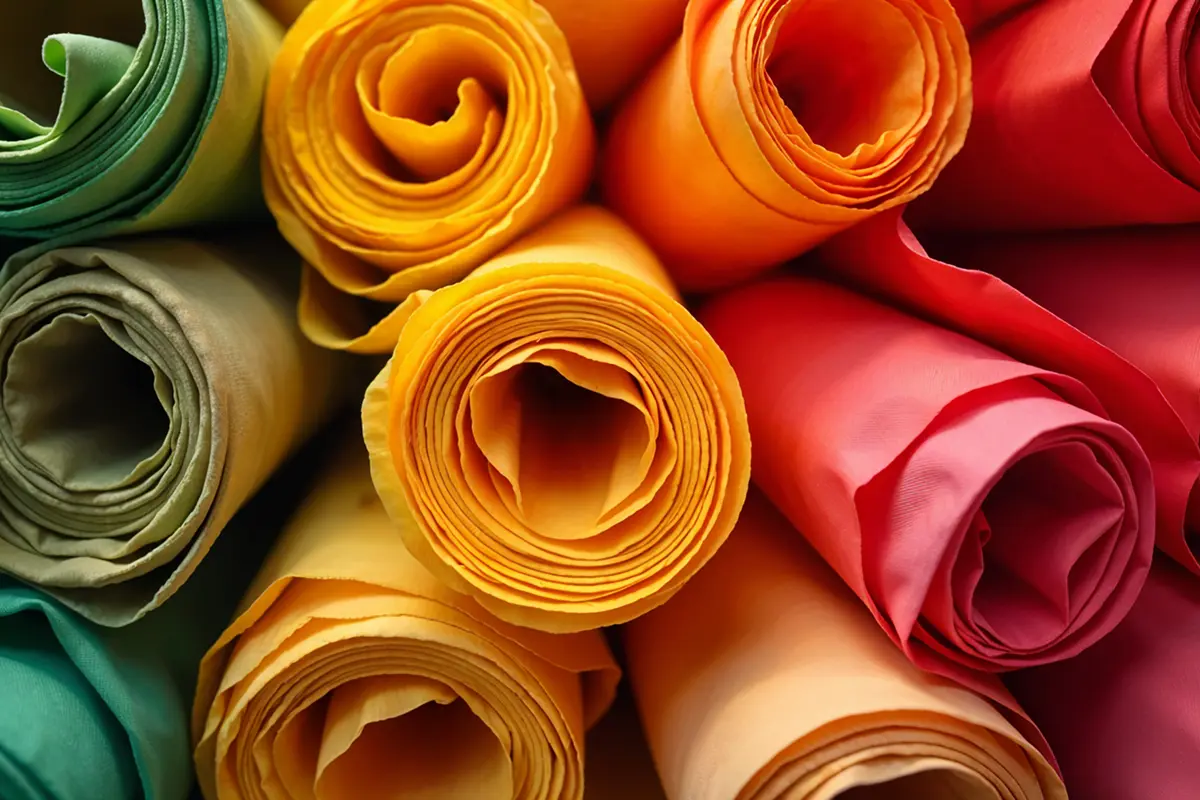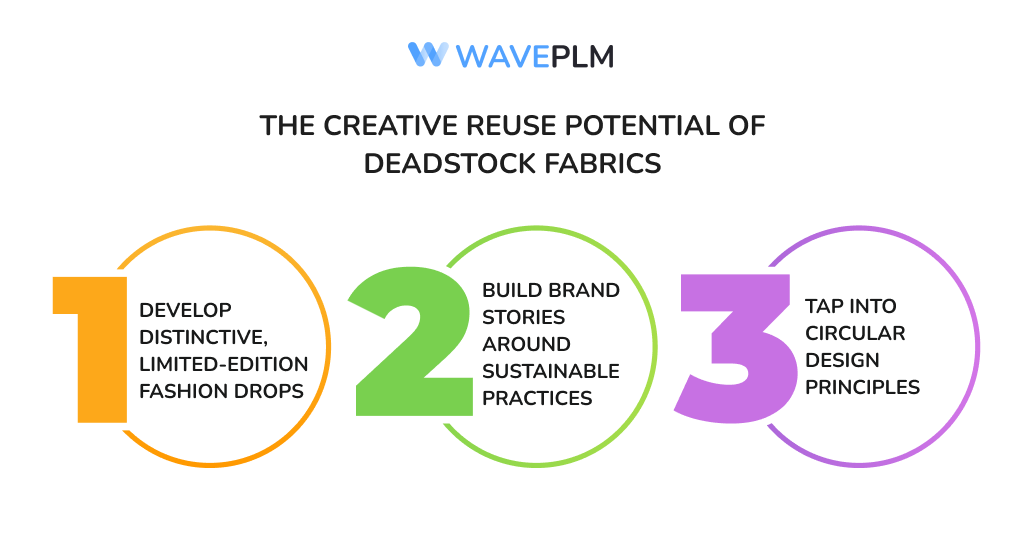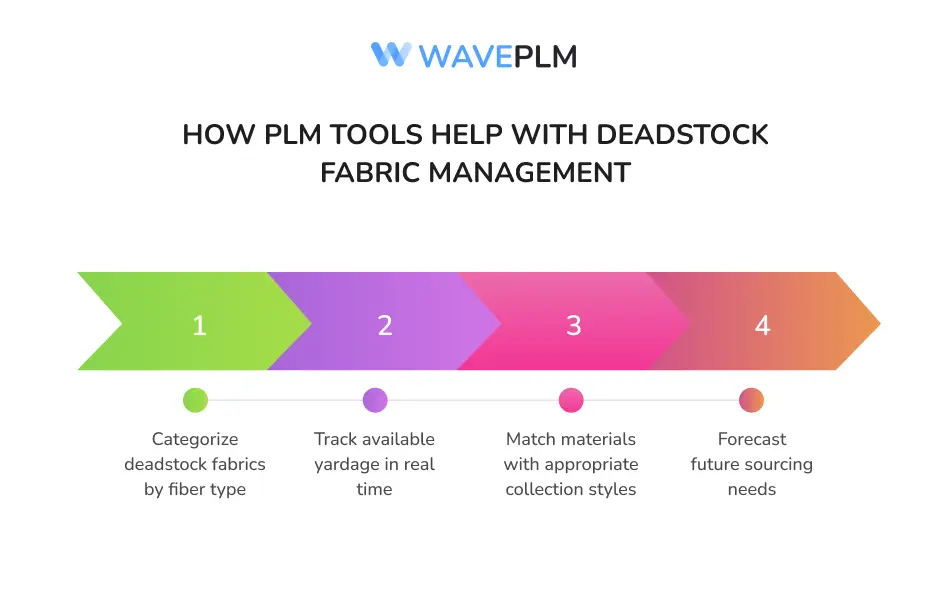
Many designers and consumers ask: what does deadstock fabric mean, and is it truly sustainable? This comprehensive guide explores the deadstock fabric meaning, debunks common myths, and reveals how fashion brands can harness the potential of deadstock fabrics for creative reuse, limited-edition fashion, and responsible sourcing.
What Does Deadstock Fabric Mean?
Deadstock fabrics refer to surplus fabric that remains unused after textile production. These fabrics are often left over due to overproduction, canceled orders, or leftover stock from seasonal or capsule collections. Instead of being thrown out or left to collect dust in storage, these unused rolls of fabric are given a second life by fashion designers and clothing brands to create sustainable clothes, minimizing waste and promoting slow fashion.
Deadstock is often mistaken as damaged or defective material. In reality, it usually consists of perfectly usable, high-quality fabrics that simply exceeded demand. For environmentally conscious brands, this provides a sustainable alternative to sourcing new, resource-intensive textiles.
Common Sources of Deadstock:
|
Source |
Reason for Surplus |
|---|---|
|
Factories |
Overproduction, misprints, or canceled bulk orders |
|
Mills |
Orders not meeting minimum quantities or rejected batches |
|
Designers |
Leftover stock from previous collections or custom styles |
|
Retailers |
Discontinued lines or off-season garments that never reached the store |
Using deadstock fabrics helps brands reduce textile waste, lower dependence on new fabrics, and align with goals to use more sustainable materials.
Debunking Common Deadstock Myths
Myth 1: All Deadstock Fabric is Sustainable
While reusing deadstock fabrics is often better than producing new textiles, not every piece of deadstock is environmentally safe. Some may be made of synthetics, blended fibers, or finished with toxic chemicals. Brands must assess the full lifecycle of these fabrics to verify their fit within eco friendly frameworks. This assessment can have a positive impact by ensuring that the use of deadstock fabrics contributes positively to both the environment and society.
Myth 2: Deadstock Means Poor Quality
A widespread misconception is that deadstock equates to inferior quality. In fact, many deadstock materials originate from luxury brands or reputable mills, making them ideal for creating quality garments. These textiles often meet strict industry standards and offer premium finishes, durability, and craftsmanship. What disqualifies them from sale is often quantity, timing, or print misalignment, not quality defects.
Myth 3: Deadstock is Always Cheap
It’s tempting to assume that deadstock fabrics are budget-friendly. While some suppliers offer them at discounted rates, others may price rare or limited-edition textiles higher due to their uniqueness. These unique fabrics are often sold at a premium because the scarcity of certain prints, colorways, or natural fibers can drive up demand among fashion brands and independent designers.
The Creative Reuse Potential of Deadstock Fabrics
Deadstock fabrics offer immense potential for creating sustainable clothing and reducing waste in the fashion industry. They open opportunities for experimentation, storytelling, and exclusivity. Many clothing brands turn to deadstock to:
- Develop distinctive, limited-edition fashion drops
- Build brand stories around sustainable practices
- Tap into circular design principles
Independent designers, in particular, benefit from sourcing deadstock to produce small runs of garments, often handmade, that appeal to customers seeking uniqueness and sustainability.

Real-Life Examples:
|
Brand |
Use of Deadstock |
|---|---|
|
Reformation |
As a leading fashion brand committed to sustainable and ethical practices, Reformation sells collections built around sustainable deadstock fabrics |
|
Marine Serre |
Creates high-fashion upcycled pieces using surplus fabrics |
|
Christy Dawn |
Designs seasonal lines entirely from leftover fabric |
|
Eileen Fisher |
Uses recycled materials and deadstock to reduce textile waste |
Benefits of Deadstock Fabric
|
Benefit |
Explanation |
|---|---|
|
Reduces Textile Waste |
Diverts leftovers from landfills, extending the life of fabrics and reducing waste by utilizing deadstock fabrics |
|
Supports Sustainability |
Minimizes the use of energy, water, and chemicals required to produce new fabrics |
|
Adds Exclusivity |
Small batches create rare, collectible clothing items |
|
Tells a Story |
Appeals to customers who seek purpose-driven purchases |
|
Reduces Carbon Footprint |
Avoids emissions linked to virgin textile production |
|
Empowers Creativity |
Encourages design adaptability, spontaneous color or print combinations |
How Deadstock Fabrics Fit Limited-Edition Fashion
Deadstock’s limited availability makes it ideal for exclusive lines, particularly for fashion brands trying to differentiate in a saturated clothing market. It supports:
- Pre-order models that reduce excess inventory
- Special capsule collections with built-in scarcity
- Seasonal drops that capitalize on trend responsiveness
Designing with deadstock fabrics fosters agility. It encourages brands to be flexible, responsive, and inventive. This strategy also discourages fast fashion overproduction and its associated environmental toll.
Fabric Sourcing Strategies with Deadstock
Efficient fabric sourcing is essential for brands embracing deadstock materials. Inventory levels are often unpredictable, and restocks are not guaranteed. Therefore, clothing brands need sourcing systems that are proactive and organized.
The rapid expansion of the textile industry has led to significant negative environmental impacts, particularly due to fast fashion.
Sourcing Channels:
- Online marketplaces that specialize in deadstock fabrics. Marketing efforts have significantly promoted these platforms, making them more accessible to consumers.
- Partnerships with factories, mills, and retailers
- Wholesale suppliers offering limited-run fabrics
- Industry expos and local surplus warehouses
Tips for Sourcing:
|
Tip |
Why It Helps |
|---|---|
|
Vet your suppliers |
Prevents greenwashing and ensures fabric integrity. Additionally, supporting ethical and sustainable practices is crucial when vetting suppliers to promote eco-friendly materials and production methods. |
|
Track inventory with PLM |
Maintains control over fluctuating quantities and types |
|
Design with adaptability |
Adjust patterns and sizes to accommodate excess fabric |
|
Focus on communication |
Align teams on available textiles, timelines, and deliveries |
How PLM Tools Help With Deadstock Fabric Management
Managing deadstock fabrics manually can be chaotic. That’s where PLM software helps. Product Lifecycle Management systems offer powerful tools to:
- Categorize deadstock fabrics by fiber type, including woven materials, color, and supplier
- Track available yardage in real time
- Match materials with appropriate styles in the collection pipeline
- Forecast future sourcing needs
By integrating deadstock fabrics into a digital sourcing ecosystem, fashion brands can create better workflows, align teams across departments, and reduce errors during the production process.

Is Deadstock the Answer to Eco-Conscious Fashion?
Sustainable deadstock fabrics offer one powerful method for making fashion more responsible. But they are not a silver bullet. Brands should treat them as one piece of a larger eco-conscious fashion framework that also includes:
- Choosing natural fibers and biodegradable materials
- Using recycled materials from post-consumer waste
- Limiting overproduction to reduce waste
- Prioritizing ethical labor and transparent supply chains
In this way, we can move towards a more circular world where waste is minimized and sustainable practices are adopted.
Still, deadstock fabrics can significantly reduce the environmental damage caused by fast fashion and overconsumption. They help brands lower their carbon footprint, reduce reliance on textile mills, and offer meaningful alternatives to mass-produced garments.
Final Thoughts
The deadstock fabric meaning goes beyond leftover fabrics. It’s a symbol of resourcefulness, adaptability, and commitment to reducing textile waste in the fashion industry. For designers, sourcing deadstock fabrics presents a unique opportunity to:
- Reduce their environmental impact
- Improve storytelling through material provenance
- Launch small-batch collections with purpose
- Build strong relationships with customers who care about the planet
By making a purchase, customers can support ethical initiatives and social missions, positively contributing to communities in need and promoting sustainable practices in the fashion industry.
Adopting deadstock sourcing not only benefits the environment—it also drives innovation and authenticity. For both new and established brands, this is a strategic move toward responsible growth and sustainable style.
Quick FAQ
|
Question |
Answer |
|---|---|
|
Is deadstock fabric cheaper? |
Sometimes, but not always—rare fabrics or designer leftovers can be expensive |
|
What are the benefits of deadstock fabric? |
Reduces textile waste, supports creativity, and lowers demand for new production |
|
What happens to deadstock clothing? |
Unsold stock may be resold, repurposed, or discarded if not reused properly |
|
What fabric takes the longest to decompose? |
Synthetics like polyester and nylon, common in fast fashion, can take hundreds of years |
|
How do fashion brands utilize deadstock materials to create accessories? |
Fashion brands use deadstock materials to create functional and stylish accessories, showcasing their commitment to sustainability and waste reduction in the fashion industry |





Leave a Reply